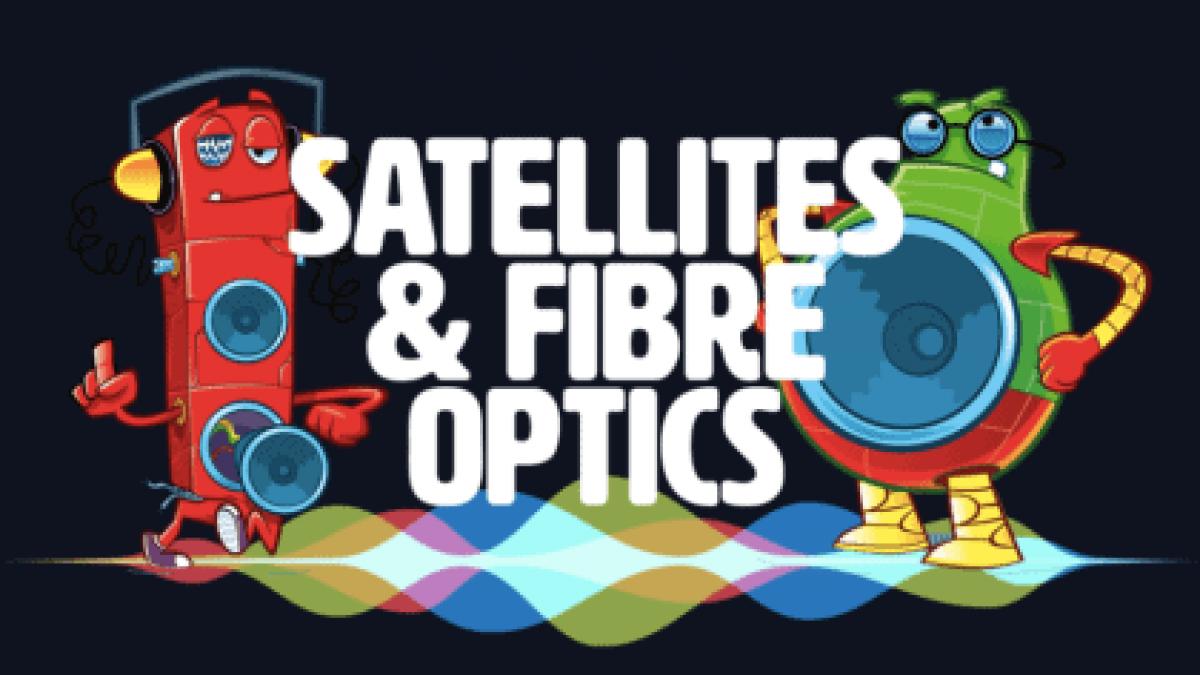Meet The Speakers







They’re a group of speakers who always want to find out more about how information is transported to people.
They’re going to help us find out about satellites and fibre optics.
Listen to this clip…
So what are satellites and fibre optic cables all about?
You’ve probably heard about Satellites and Fibre Optic Cables but do you know what they actually are or what they do?
In mission 2 we found out about how radio and TV signals go from the radio studio to your radio via a transmitter. This is great but buildings, trees and hills can get in the way of these signals meaning that not everyone can get them.
You may think that if there were no buildings, no hills and no trees the signals would carry on forever, but they don’t!
That’s because the earth is round, which means it curves. Very high frequency radio waves travel in straight lines so at some point they would just… disappear into space.
How do people get around these issues with radio waves?
This is where satellites and fibre optic cables come in.
Satellites
Embed from Getty ImagesCommunication signals of all sorts can be beamed to satellites thousands of miles above the earth. Satellites then send the signals back down to anyone who has a dish that can capture that signal.
Satellites can get around the problem of stuff like hills and buildings getting in the way because the signal goes straight up into space and then gets beamed down to your house through space, and there are no buildings or hills in the way in space!
To make sure that you can always get the signal, satellites move in orbit at the same rotation as the earth, which means it always appears at the same spot in the sky. It moves so your satellite dish doesn’t have to!
Fibre Optic Cables
Embed from Getty ImagesUnder our roads and streets are loads of cables. Some carry electricity but others are fibre optic cables which are designed to carry information! TV, radio, telephone calls and internet data too – it’s how a lot of houses connect to the internet.
So in the same way that a radio with an antenna grabs the waves out of the air and sorts them into the different stations, the internet box gets a load of digital data from these cables and sorts it out.
How do you send information through a cable?
Information flowing through a fibre optic cable is sent as light. So if you get your internet through a fibre optic cable and you play a video then the video will be sent to your computer as a series of light pulses that your computer decodes to make the video on your screen.
Information can travel as light through these cables across very long distances. It works as the cable is like a long mirror on the inside so the light bounces all the way along the cable until it gets to where it needs to be.
You may have seen these strange lamps before…
Embed from Getty ImagesThese are fibre optic cables, the light bounces along the cable and appears at the end. This is exactly how the ones that give you internet work but that light at the end of the cable goes into your computer and that is converted into information that your computer can understand.
Your mission is to complete this quiz…
Check back tomorrow for another mission all about physics
Add a commentWeek 11: Physics
This week's missions are all about physics! We'll be finding out what sound is and what have waves got to do with it?
More From Week 11: Physics






